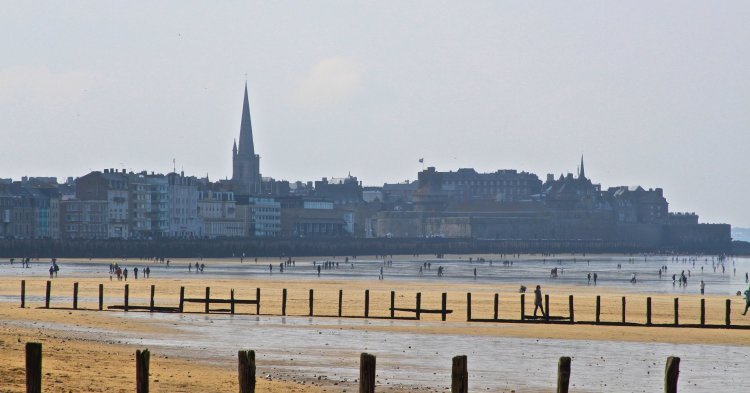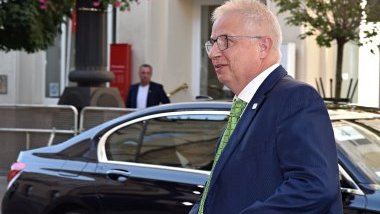Learning from the ‘cousins’
Besides migration, the new Vice-President portfolio would include security, employment and education. Those upset by the name of the portfolio accused von der Leyen of using the rhetoric of the far-right, and that the anti-immigration tones in it were very far from what Europe stands for.
Such debates and disagreements are nothing new. On the road to its formation and then integration, numerous individuals, parties, groups and governments envisioned the Union to be something very different from what it is today – even if some of them used the same concepts to present their vision.
Similar debates took place in the early days of the United States, and some never ended. To figure out what the “European way of life” could mean, one should observe the evolution of the “American way of life”.
In his book The American Way of Life: A Cultural History, Lawrence R. Samuel argues that the phrase, popularised in the 1930s, “has served as the primary guiding mythology or national ethos of the United States.”
According to this mythology, the “American way of life” centred on free enterprise, liberty and the pursuit of happiness. It was the sum of the things that separated the United States from the rest of the world. But the beauty and the strength of the concept came from its flexibility. The “American way of life” could be stretched to cover values such as fierce individualism and consumerism, but also hot dogs and baseball.
At the same time, the fact that the “American way of life” became a common phrase in the 1930s is essential to identifying its meaning and importance. The 1930s in the US was the age of the Great Depression – one quarter of the working population of the country was unemployed, house foreclosures were endemic and the lush living of the roaring ‘20s seemed like a distant, unreal world.
The American dream was suffering. The land of abundance, tolerance and opportunity that had been promised to the “huddled masses” by Emma Lazarus in her 1887 sonnet “The New Colossus”, inscribed on the Statue of Liberty, was no more.
If it was not her riches, what would separate the New World from the Old? Her “American way of life.”
Towards a European way of life
The same sonnet that can be found on the Statue of Liberty, a symbol of the United States, can be read as a letter to Europe. “Keep, ancient lands, your storied pomp” but give me “the wretched refuse of your teeming shore”, cried the ‘Mother of Exiles’, the Colossus of Rhodes that had now moved onto Liberty Island off of New York City.
The United States created its identity in opposition to the Old World, to Europe. It did so in a time of desperation, when poverty struck at its image of wealth and rocked its economic and social system to the core.
Europe now needs to do the same. And that means drawing lines of separation between what is Europe and what is non-Europe. That does not mean closing the borders to the refugees fleeing from war and destruction, nor sinking ourselves in the collectivist and racist nightmares of the past. But it does mean that the EU needs a mythology of its own, a set of crucial values and even seemingly insignificant things that can be identified as being European.
Europe needs to be able to say that linguistic, religious and ethnic diversity is thoroughly European. So are waffles, polenta, sangria, pierogi, cheese fondue, arancini, moussaka, goulash and the currywurst. So is football – the real one, not what the Americans are doing. Speaking five languages in a group of four friends is also European.
Lines of separation are not inherently fascist – otherwise we would all be. The European identity that must accompany a functioning European Union will never exist without them. One must be careful, however, how these lines are built. If it is done with racial hatred and intolerance, Europe will have moved backwards in time. If it is not done at all, the daring project that is the EU will necessarily crumble, caught between nationalist urges and progressive outrage.



1. On 15 January 2020 at 00:36, by Arnold Pitt Replying to: Despite criticism, the EU needs a “European way of life”
Replying to: Despite criticism, the EU needs a “European way of life”
Europe a bezoin d’une langue Europeen, ne une des langue Etniqhue ou national, mais une langue international avec des radiclesEuropeen ( Latin, germana(allemande) et Slav. Et avec une grammaire simple, Peutetre avec un base de Esperanto. Jeregretteque ma Frncaisne pas bonne mais j’espere que vous comprenz. Europe needs a common language , not one of the Ethnic or national languages but an international language with European roots (principally Latin ,Germnic and Slav). and with a simple regular grammar and phonic spelling. Perhaps based on Esperanto
Follow the comments: |
|
